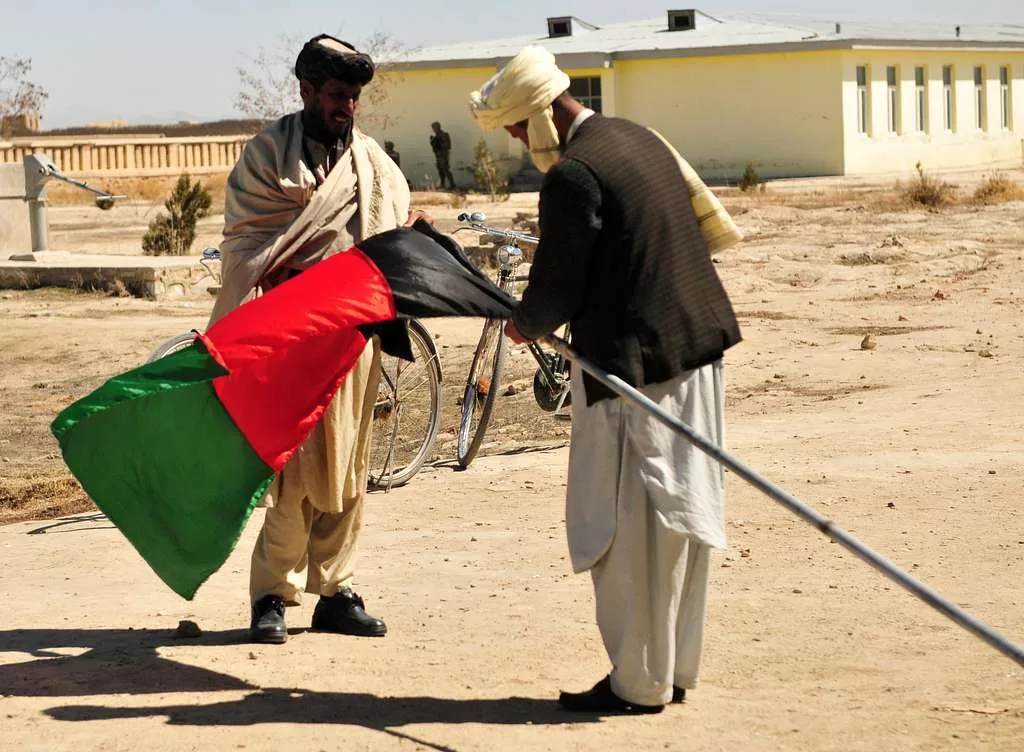By Ihsanul Haq Ateed for Invisiblites
The fall of the Afghan Republic in 2021 shattered the aspirations of a generation raised with the promise of democracy, the rule of law, and modern governance. The return of the Taliban did not merely mark a political shift—it created an ideological rupture, leaving young Afghans in a state of deep disillusionment. This generation, caught between conflicting ideals, is struggling to reconcile its past hopes with present realities. The question remains: Where do they belong in this altered Afghanistan?
Frantz Fanon and the Psychology of Colonized Minds
Frantz Fanon, a psychiatrist and decolonization theorist, explored the psychological turmoil faced by colonized societies. While Afghanistan was not a formal colony, its youth underwent a comparable experience. The rapid Westernization of Afghan institutions, the emphasis on democratic governance, and the promotion of human rights created a generation that internalized modern values. However, the collapse of the Republic left them stranded—no longer fitting within the traditional structures of Afghan society, yet also abandoned by the global order that once championed their cause.
Fanon argued that individuals caught in such contradictions suffer from double consciousness—they are unable to fully embrace either identity. In today’s Afghanistan, young people face a similar dilemma. Those who once saw themselves as agents of progress and reform now feel like outcasts in their own country. They have become foreigners in their homeland, unable to integrate into a system that actively rejects their worldview.
Durkheim and the Loss of Social Order
Sociologist Emile Durkheim introduced the concept of anomie, a state of normlessness that occurs when societies undergo rapid change, leaving individuals feeling disconnected and uncertain. Afghanistan’s youth are currently experiencing this phenomenon. For two decades, they operated under a framework that provided structure: education led to employment, activism led to policy changes, and institutions—though flawed—offered a vision of progress.
When the Taliban returned, this structure collapsed overnight. Education for women was banned. Job markets shrank. Civil liberties vanished. In Durkheimian terms, Afghan youth have entered a period of moral confusion. The social norms they followed no longer exist, and no new order has replaced them—at least not one they can accept. Many now struggle with existential questions: What is our purpose in a society that does not need us? How do we reconcile our beliefs with a reality that contradicts them?
The Crisis of Afghanistan’s Youth: The Rise and Fall of Aspirations – Invisiblites
Gramsci and the Struggle for Hegemony
Political theorist Antonio Gramsci argued that societies are ruled not only by coercion but also by cultural hegemony—the dominance of certain ideas and values that shape public consciousness. In post-2001 Afghanistan, the dominant narrative was that democracy, human rights, and governance reforms were the path forward. The young generation, raised in this intellectual environment, accepted these ideals as the natural order of things. But the Taliban’s return signaled a shift in hegemony. Now, traditional and religious values are being enforced as the dominant ideology, while modern democratic ideals are pushed to the margins. This is more than just a political shift—it is an attempt to rewrite history and redefine identity.
Afghan youth are thus engaged in a battle over national identity. Some choose resistance—fleeing the country, going underground, or using social media to challenge the regime. Others choose conformity, adapting to the new order to survive. But many are trapped in passive despair, unsure of how to move forward in a system that no longer represents them.
The Long-Term Implications: A Lost Generation?
This identity crisis has long-term consequences for Afghanistan’s future:
1. Mass Exodus and Brain Drain
Many young Afghans, particularly educated professionals, are fleeing the country. This not only deprives Afghanistan of talent but also weakens any potential for internal reform.
2. Radicalization and Extremism
When young people lose faith in both democracy and the current regime, they become vulnerable to radical alternatives. Some may turn to extremist ideologies as a means of reclaiming power, while others may disengage entirely from political life.
3. Generational Divide
Afghanistan’s older generations largely accepted traditional power structures, while today’s youth were shaped by two decades of modern governance. This has created an ideological gap that fuels social fragmentation.
4. The Future of Resistance
While some young Afghans have given up hope, others are laying the groundwork for a future comeback. Whether through online activism, underground education, or diaspora movements, they continue to challenge the Taliban’s grip on power. The question is whether these efforts will be enough to spark real change.
Conclusion
Afghanistan’s youth are facing one of the most profound identity crises in the country’s history. Raised with the ideals of democracy but now living under authoritarian rule, they are left searching for meaning in a reality that contradicts everything they were taught. The Taliban’s return did not just change governance—it fractured the intellectual and emotional landscape of an entire generation. Some are resisting, others are adapting, but many are simply lost, trapped between two competing visions of Afghanistan. Their future remains uncertain. Will they reclaim their aspirations, or will they be forced into silent submission? Only time will tell.
Ihsanul Haq Ateed is a graduate of Political Science and International Relations from the University of Lahore. His focus is on gender issues, human rights, and international affairs, and beyond. With experience in civil society organizations and a passion for exploring issues of governance, democracy, and youth empowerment, he frequently writes on topics related to human rights, conflict resolution, and identity politics. His recent work delves into the challenges faced by Afghanistan’s youth in navigating the intersection of tradition and modernity.
Photo credits: Creative Commons
